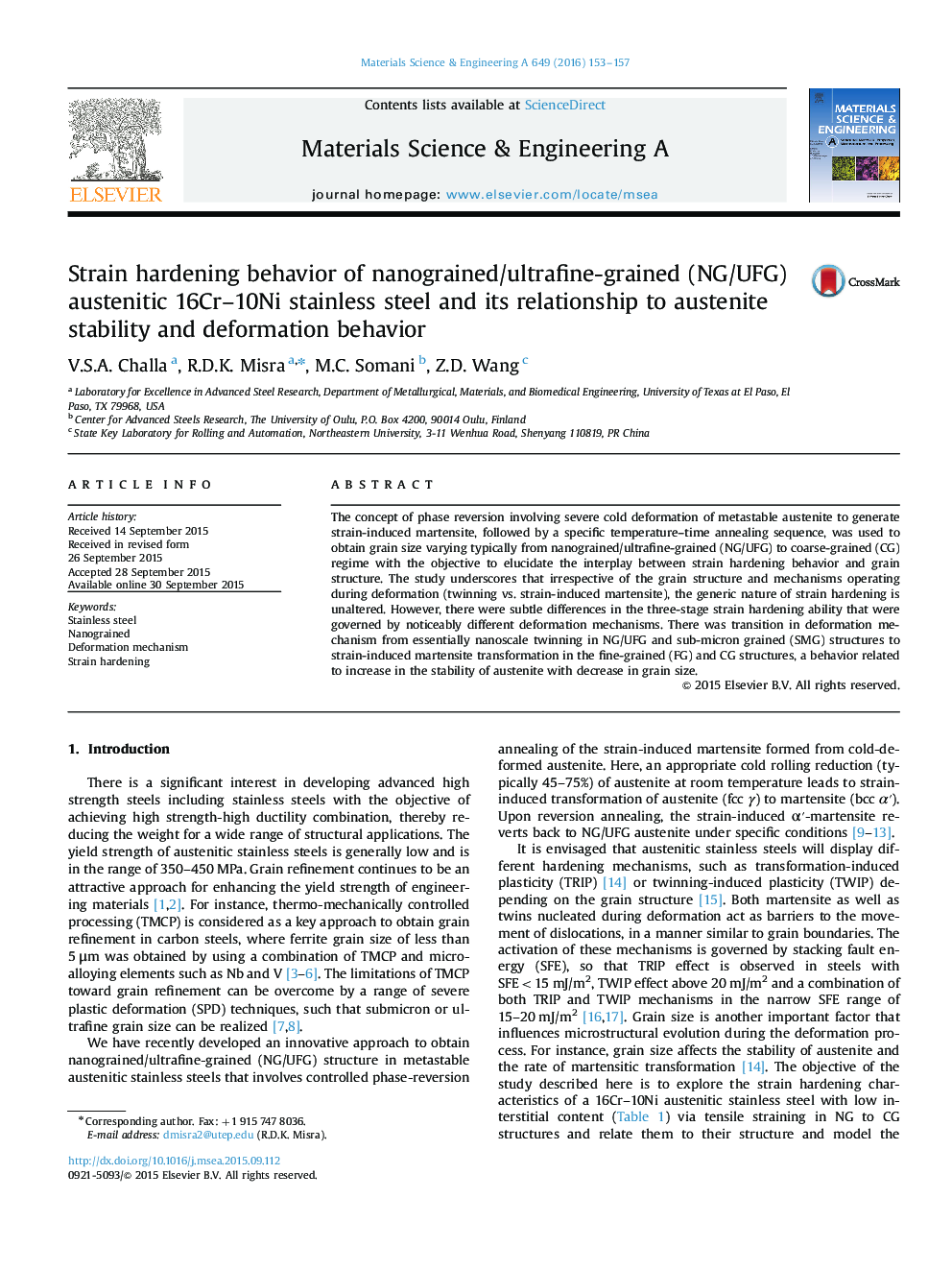| Article ID | Journal | Published Year | Pages | File Type |
|---|---|---|---|---|
| 7976466 | Materials Science and Engineering: A | 2016 | 5 Pages |
Abstract
The concept of phase reversion involving severe cold deformation of metastable austenite to generate strain-induced martensite, followed by a specific temperature-time annealing sequence, was used to obtain grain size varying typically from nanograined/ultrafine-grained (NG/UFG) to coarse-grained (CG) regime with the objective to elucidate the interplay between strain hardening behavior and grain structure. The study underscores that irrespective of the grain structure and mechanisms operating during deformation (twinning vs. strain-induced martensite), the generic nature of strain hardening is unaltered. However, there were subtle differences in the three-stage strain hardening ability that were governed by noticeably different deformation mechanisms. There was transition in deformation mechanism from essentially nanoscale twinning in NG/UFG and sub-micron grained (SMG) structures to strain-induced martensite transformation in the fine-grained (FG) and CG structures, a behavior related to increase in the stability of austenite with decrease in grain size.
Related Topics
Physical Sciences and Engineering
Materials Science
Materials Science (General)
Authors
V.S.A. Challa, R.D.K. Misra, M.C. Somani, Z.D. Wang,
